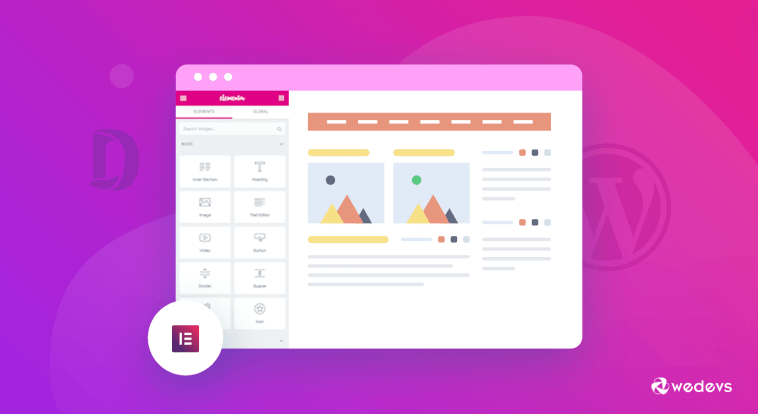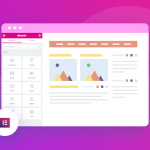Introduction.
Elementor, a powerful and widely used WordPress page builder, has emerged as a game-changer in this arena, offering a versatile toolkit that empowers users to craft professional websites without the need for extensive coding knowledge.
Designing a website with Elementor is a journey that allows you to bring your creative visions to life.
Whether you’re starting a new project from scratch or giving your existing website a fresh look, Elementor provides the tools to design, customize, and optimize your web pages with ease.
In this comprehensive guide, we will take you through the essential steps and strategies for designing a website using Elementor.
From setting up the foundation to fine-tuning the details, this guide will equip you with the knowledge and skills needed to create a visually captivating and highly functional website that leaves a lasting impression on your visitors.
Whether you’re a seasoned web designer or a novice in the field, mastering the art of designing with Elementor will open up a world of possibilities for your online presence.
Why Choose Elementor for Web Design?
Before we dive into the how-to, let’s explore why Elementor is a popular choice for web designers:
- User-Friendly: Elementor’s intuitive drag-and-drop editor makes web design accessible to everyone, regardless of their technical expertise.
- Design Freedom: With Elementor, you have complete control over your website’s layout, typography, colors, and multimedia elements.
- Extensive Widgets: Elementor offers a rich library of widgets and design elements, allowing you to create virtually any design you envision.
- Templates and Blocks: You can jumpstart your design with pre-designed templates and blocks, saving you time and effort.
- Responsive Design: Elementor ensures that your website looks great on all devices, from desktops to smartphones.
How Do I Design a Stunning Website with Elementor?
Elementor, a powerful WordPress page builder, has revolutionized the way websites are designed and built.
Its intuitive drag-and-drop interface and extensive set of design elements make it a favourite tool for professionals and beginners alike.
Whether you’re a business owner, blogger, freelancer, or simply someone with a passion for web design, mastering the art of designing a website with Elementor is a skill that can transform your online presence.
In this comprehensive guide, we will take you through the step-by-step process of designing a website using Elementor, allowing you to harness the full potential of this remarkable tool.
Let’s dive into the step-by-step process of designing a website using Elementor:
1. Install WordPress and Elementor.
If you haven’t already, install WordPress on your web hosting server and activate the Elementor plugin. Ensure you have a suitable WordPress theme installed or choose one that works well with Elementor.
2. Plan Your Website.
Before diving into design, plan your website’s structure, content, and layout. Consider your target audience, goals, and the type of content you want to showcase.
3. Create a New Page.
In your WordPress dashboard, navigate to “Pages” and click “Add New” to create a new page. Give your page a title, and click “Edit with Elementor” to launch the Elementor editor.
4. Design Your Header.
Start by designing your website’s header. You can create a custom header from scratch or use a pre-designed header template. Customize it to fit your brand and style.
5. Build the Page Layout.
Use Elementor’s drag-and-drop editor to build the layout of your page. Add sections, columns, and widgets as needed. Experiment with various design elements, including text, images, videos, buttons, and more.
6. Customize Styling.
Fine-tune the styling of your page elements. Adjust fonts, colours, and spacing to create a cohesive and visually appealing design.
7. Incorporate Dynamic Content.
Elementor allows you to integrate dynamic content from your WordPress site, such as blog posts, products, or testimonials. This feature can save you time when updating your website.
8. Design Other Pages.
Repeat the above steps to design additional pages for your website, including the homepage, about page, services or products pages, and contact page.
9. Optimize for Mobile.
Use Elementor’s responsive editing features to ensure that your website looks and functions well on mobile devices. Preview and fine-tune the mobile layout.
10. Review and Publish.
Thoroughly review your website’s design, functionality, and content. Make any necessary adjustments. Once you’re satisfied, click the “Publish” button to make your website live.
11. Test and Optimize.
Regularly test your website’s performance, load times, and user experience. Optimize your site as needed to ensure it continues to meet your goals and audience needs.
Conclusion.
Designing a website with Elementor is an empowering and creative process. With its user-friendly interface and robust design capabilities, you can transform your ideas into stunning web pages that captivate your audience and achieve your online goals.
Whether you’re creating a personal blog, an e-commerce site, a portfolio, or a corporate website, Elementor provides the tools and flexibility needed to bring your vision to life.






GIPHY App Key not set. Please check settings